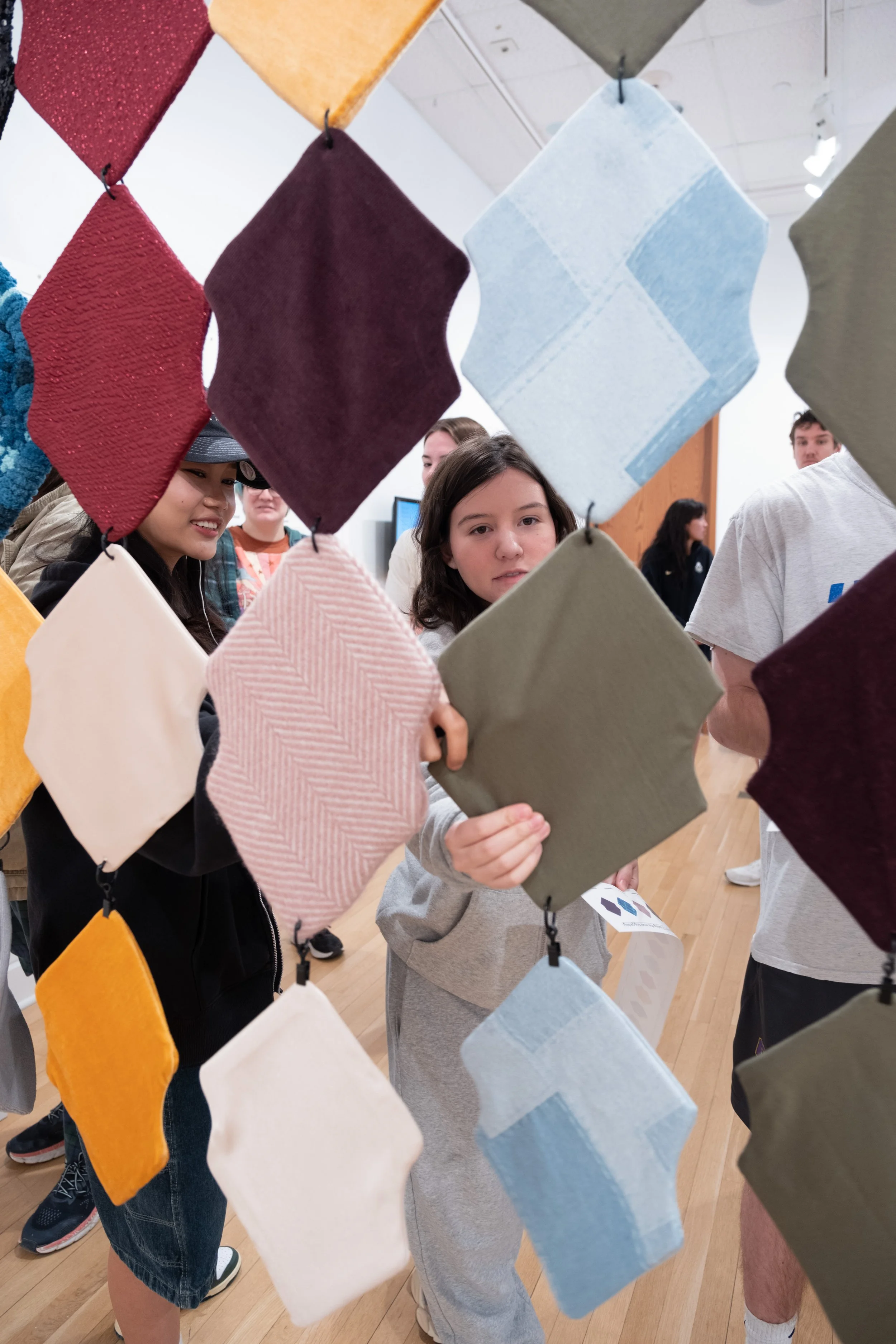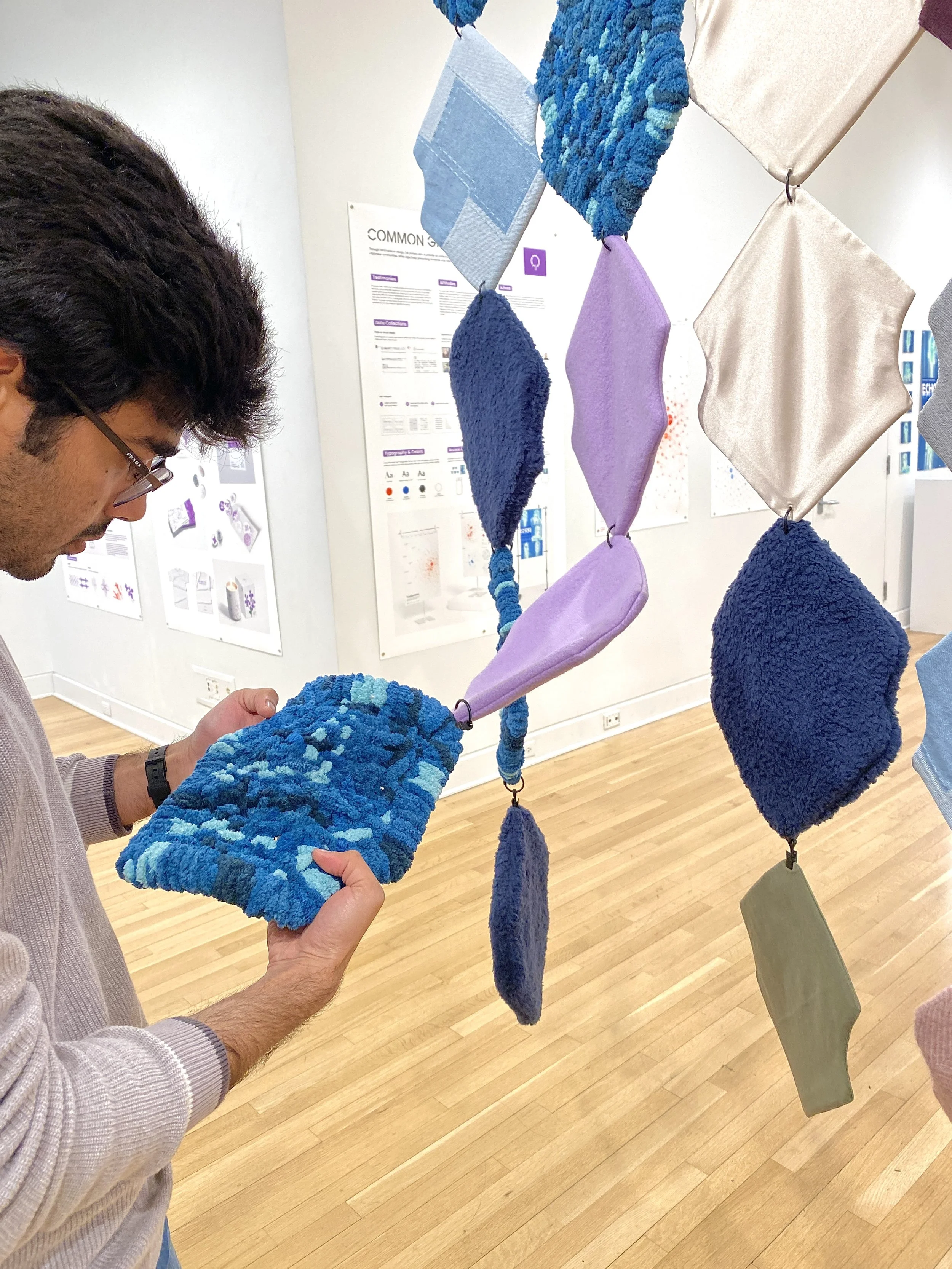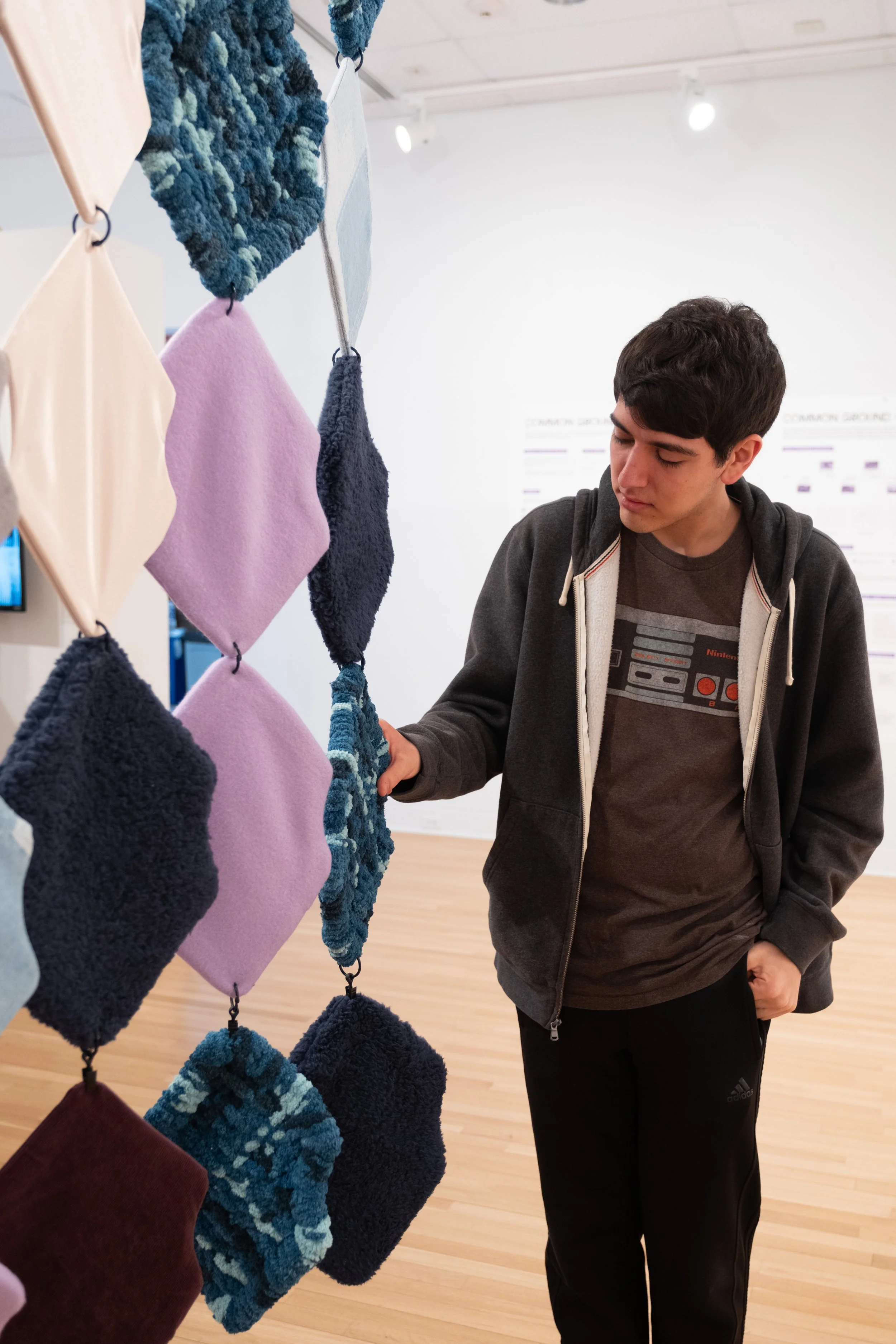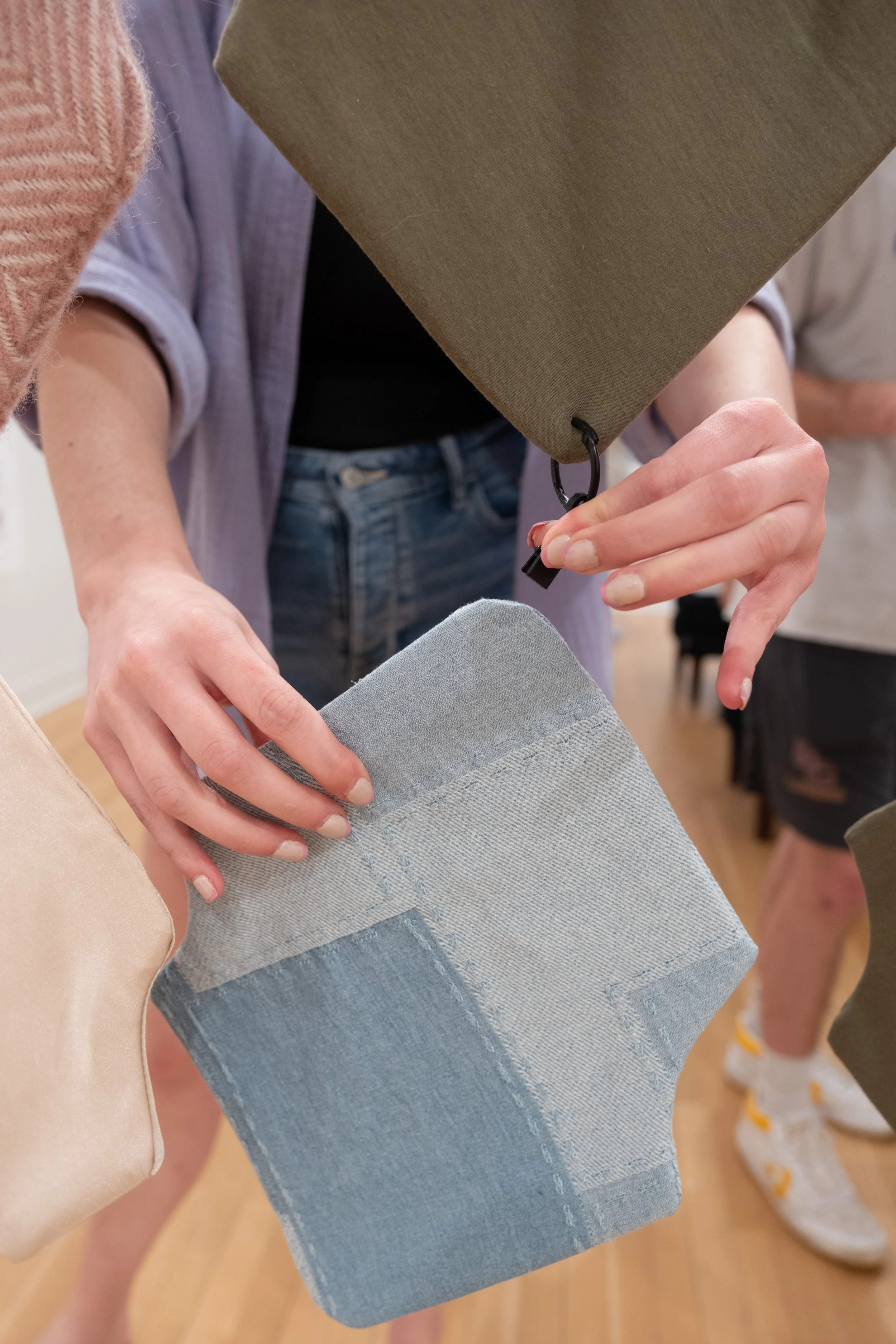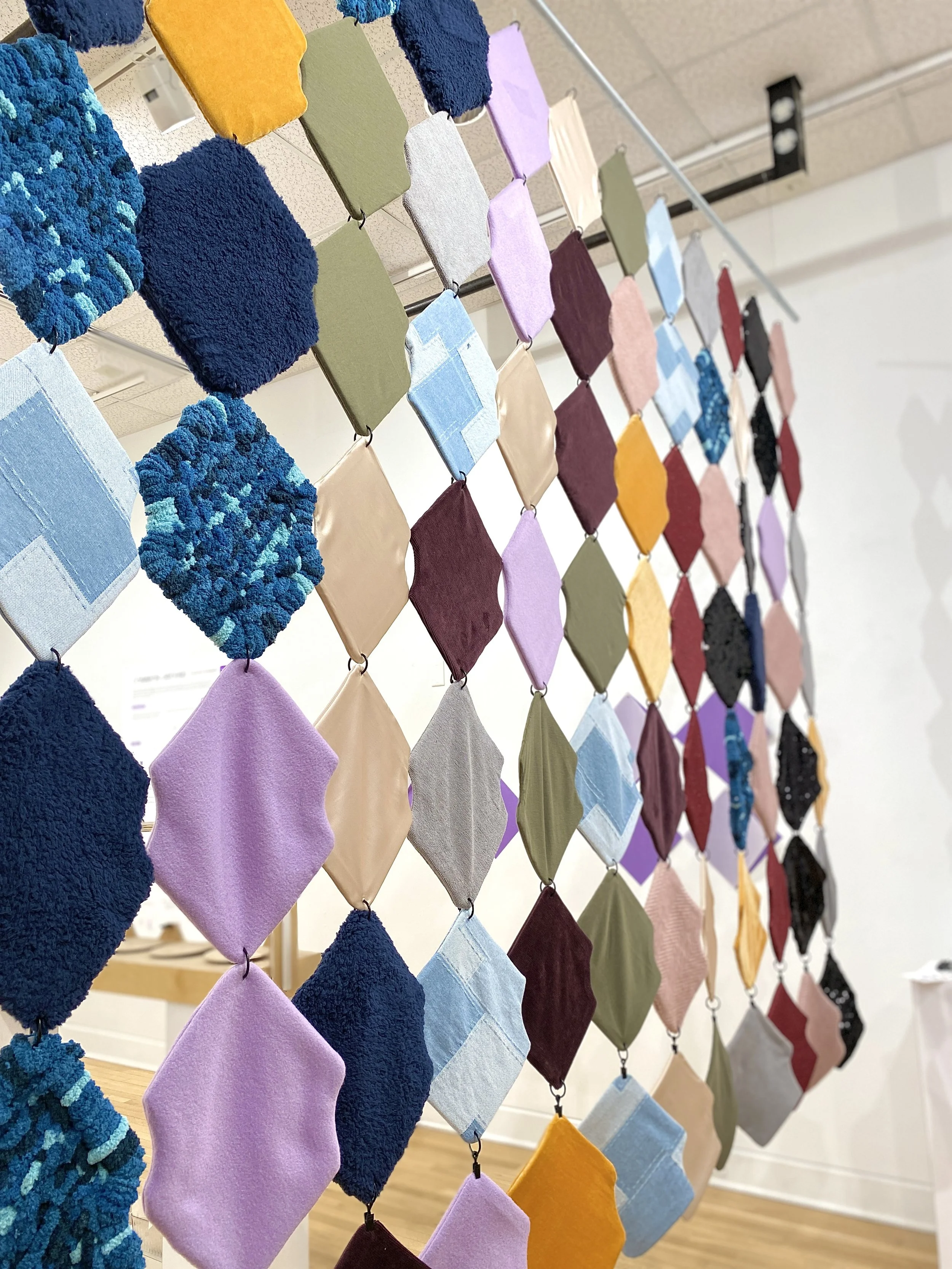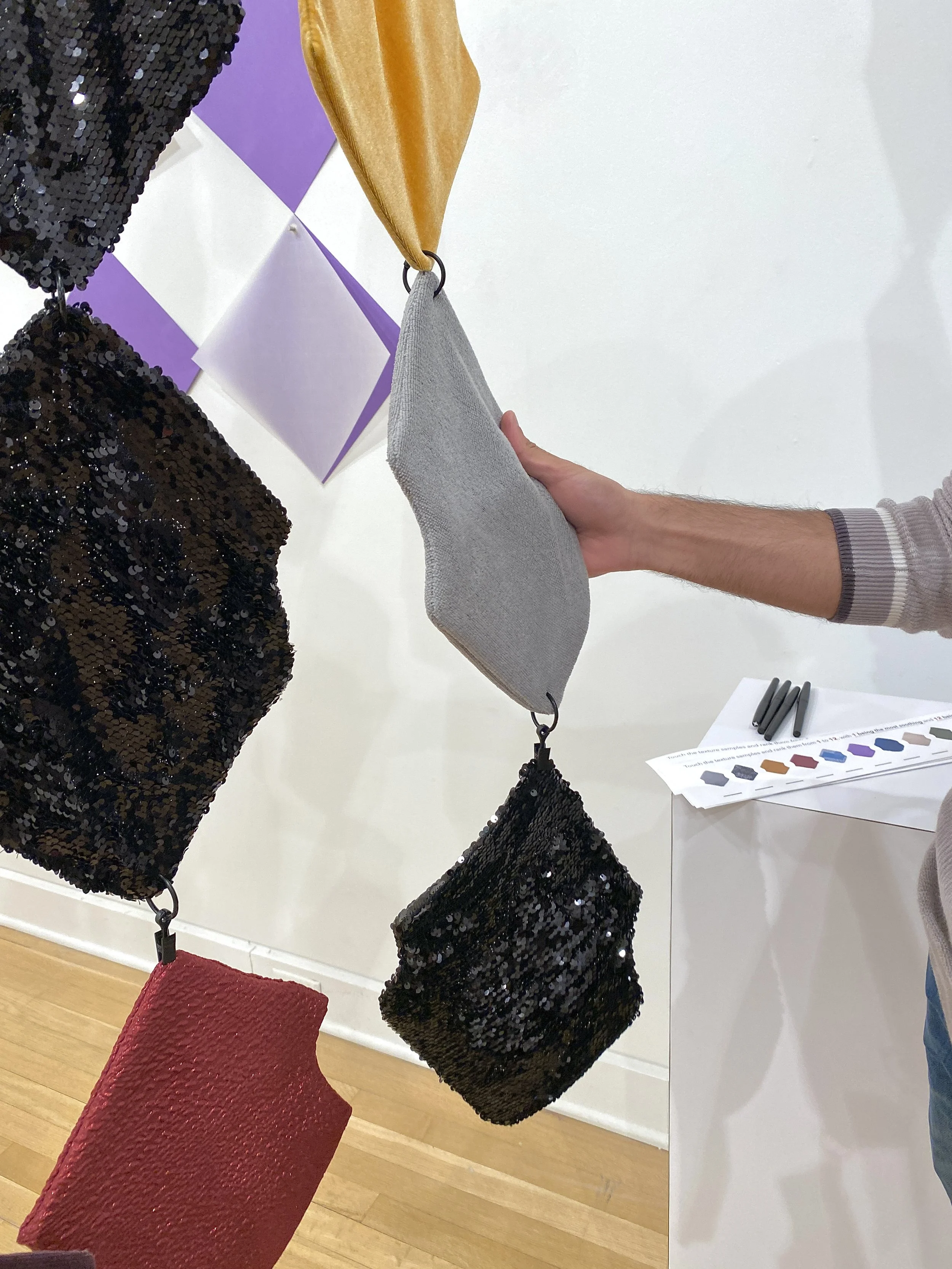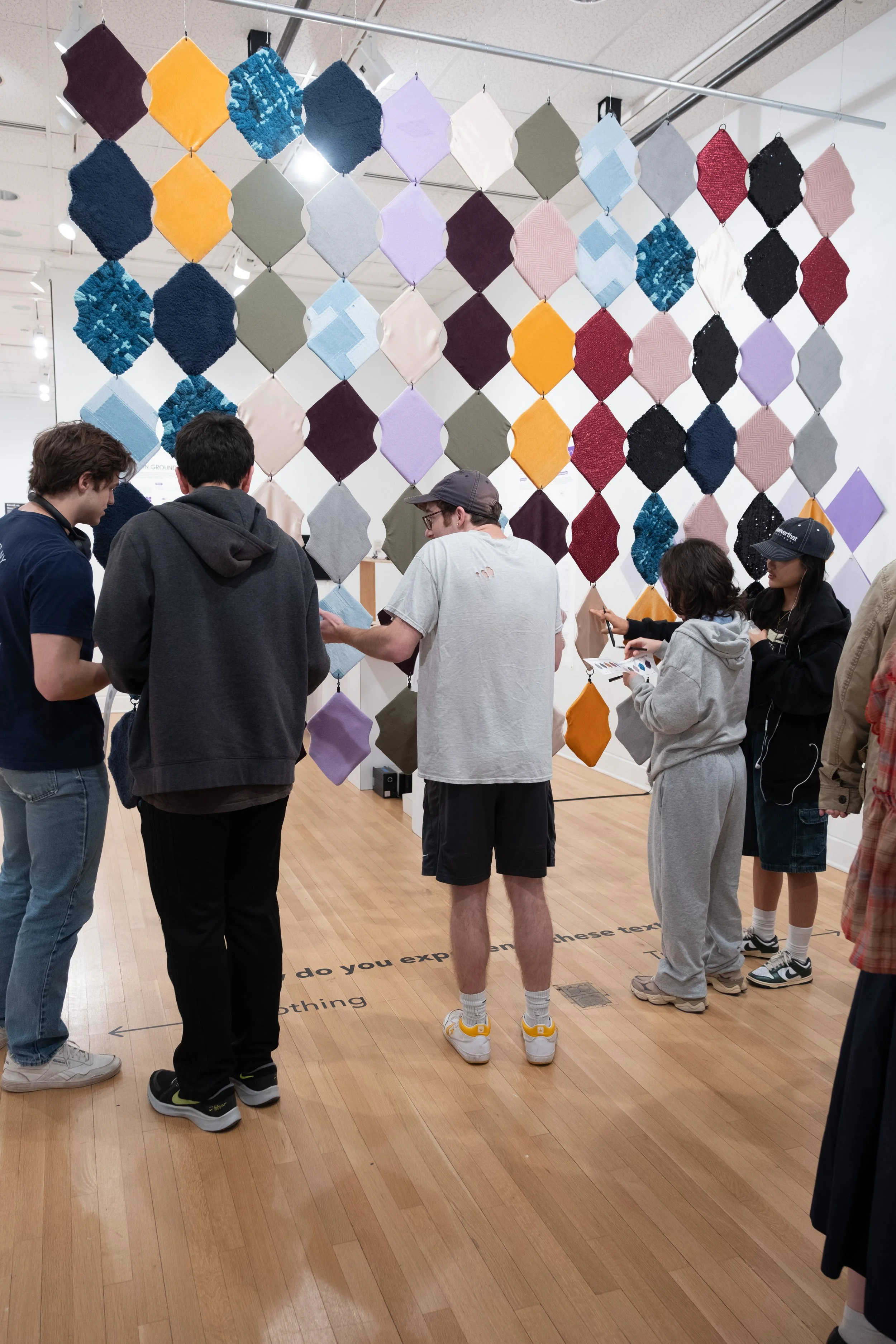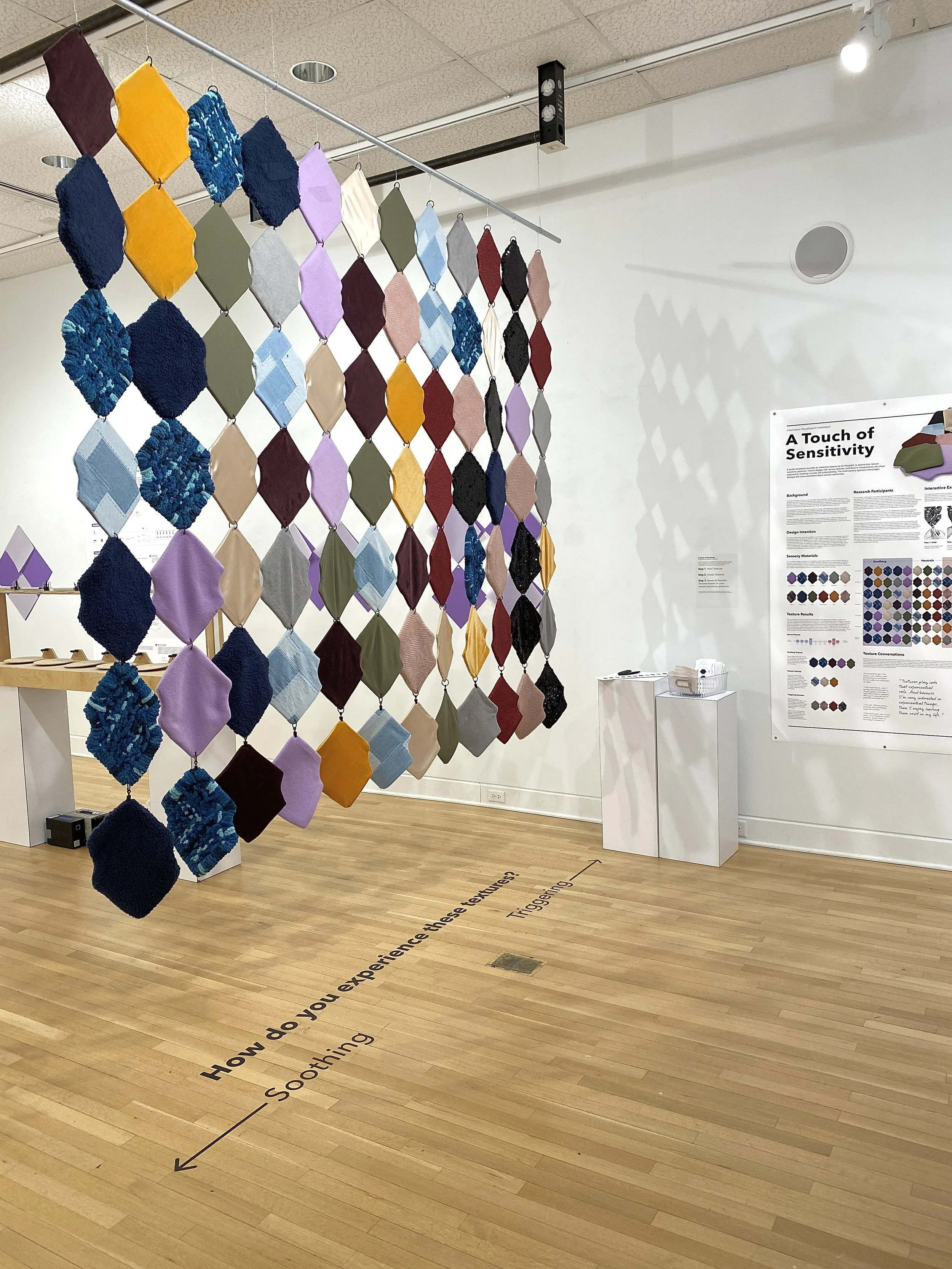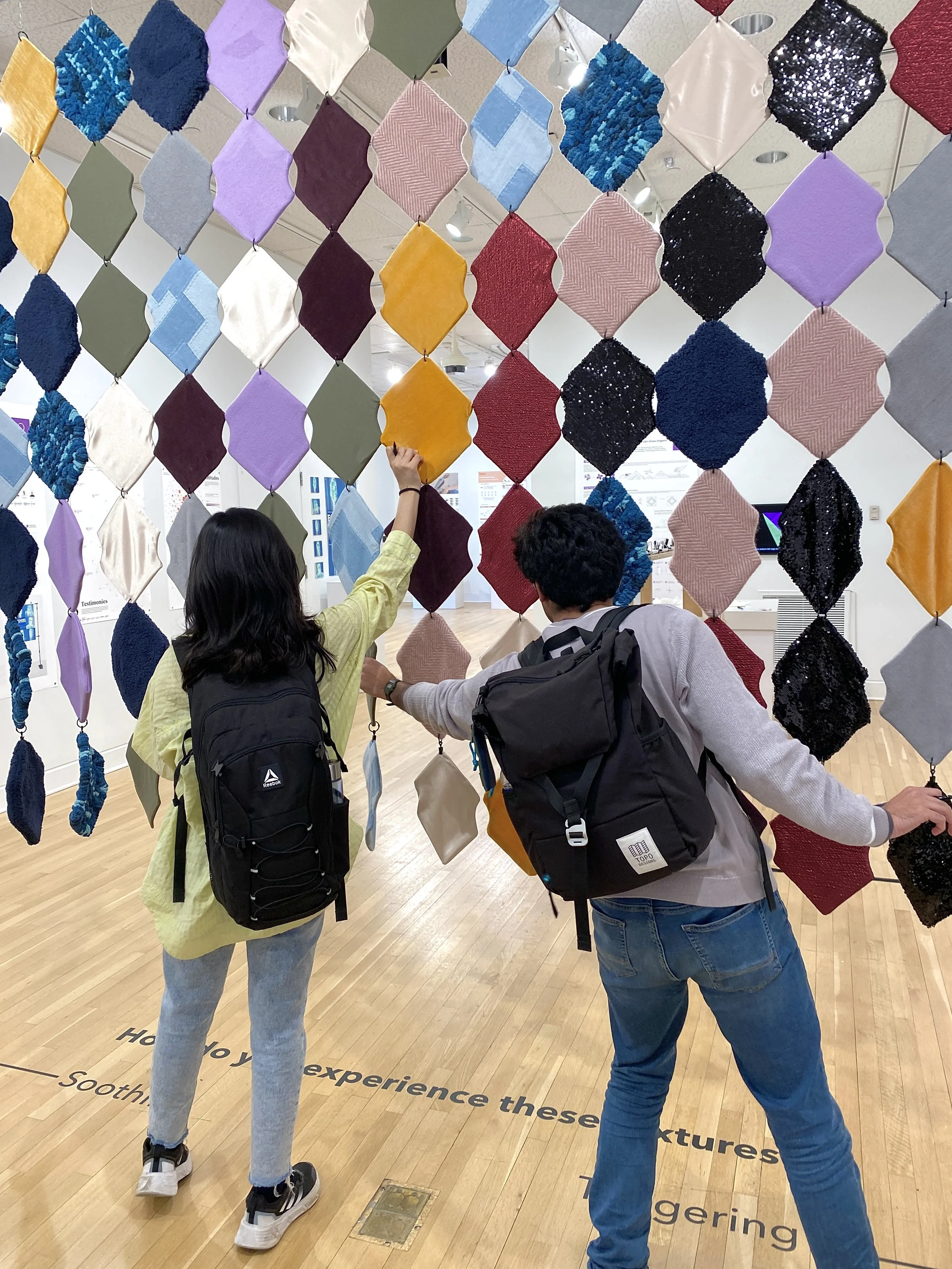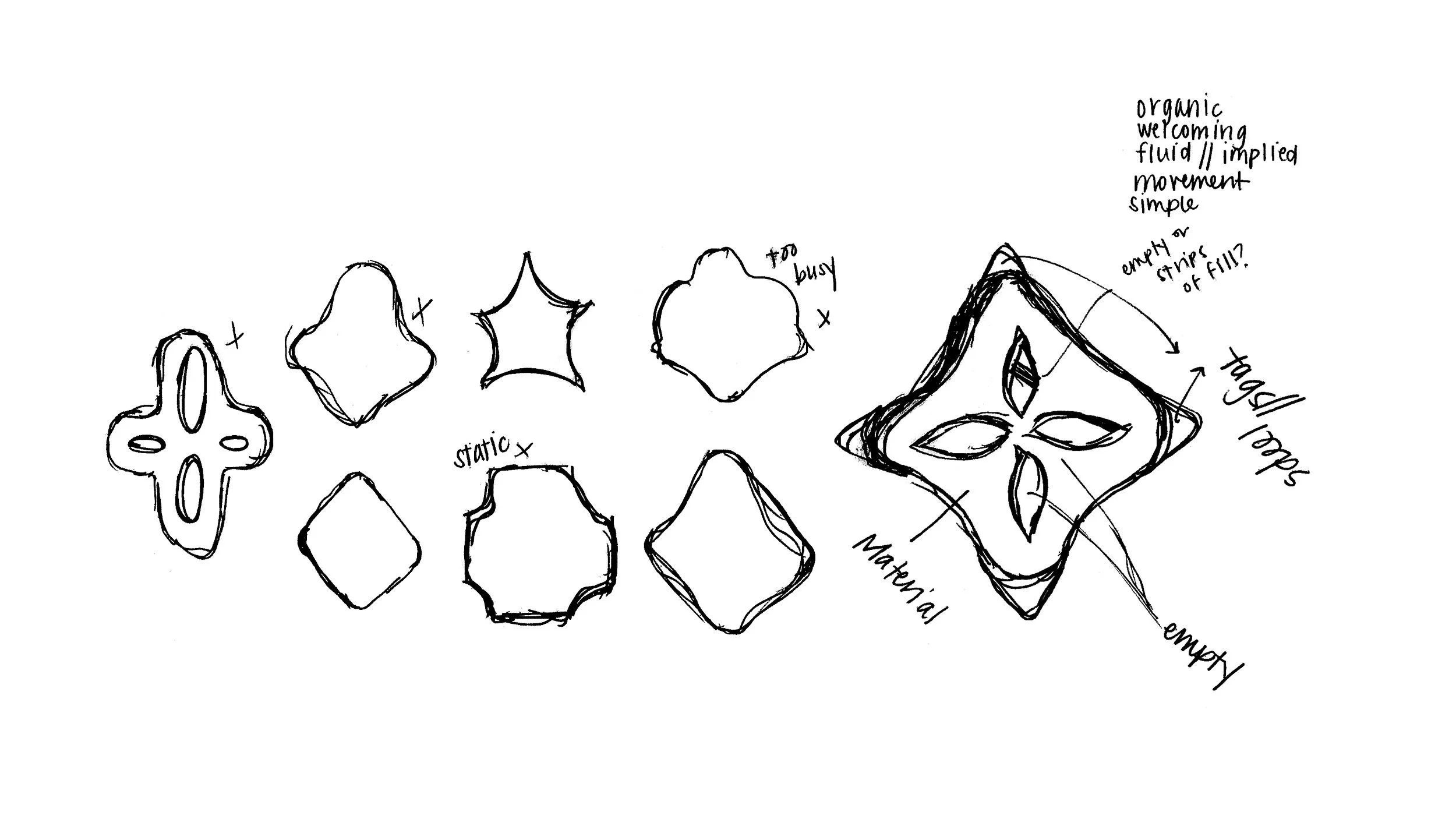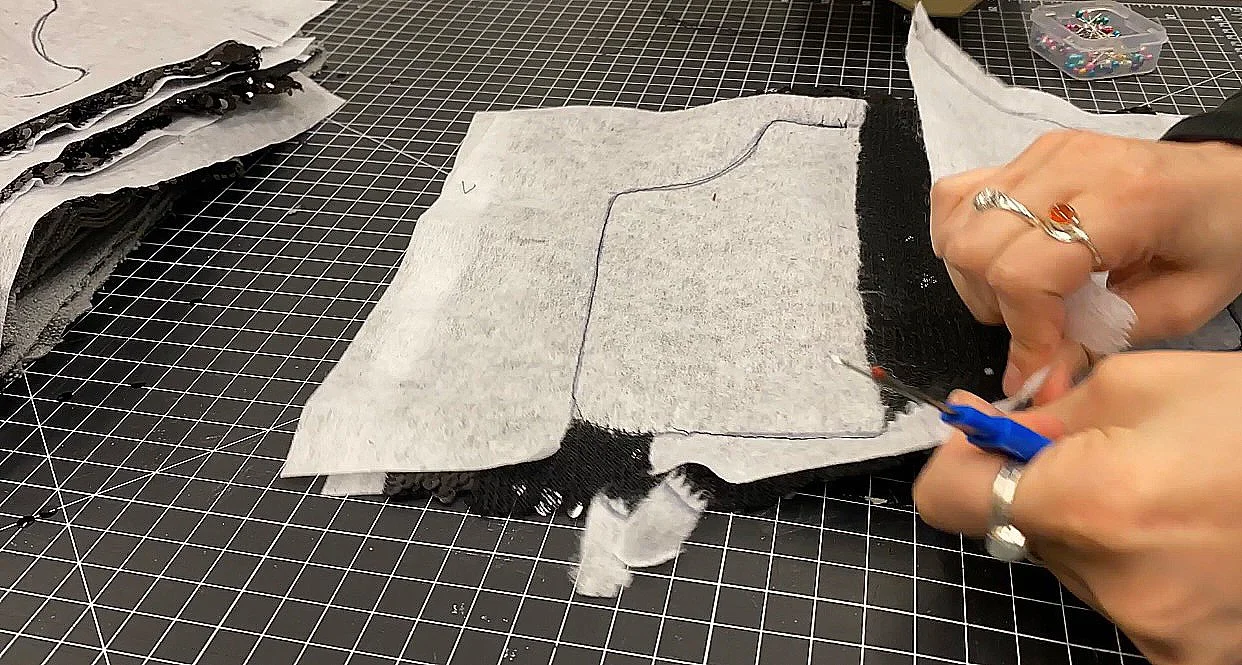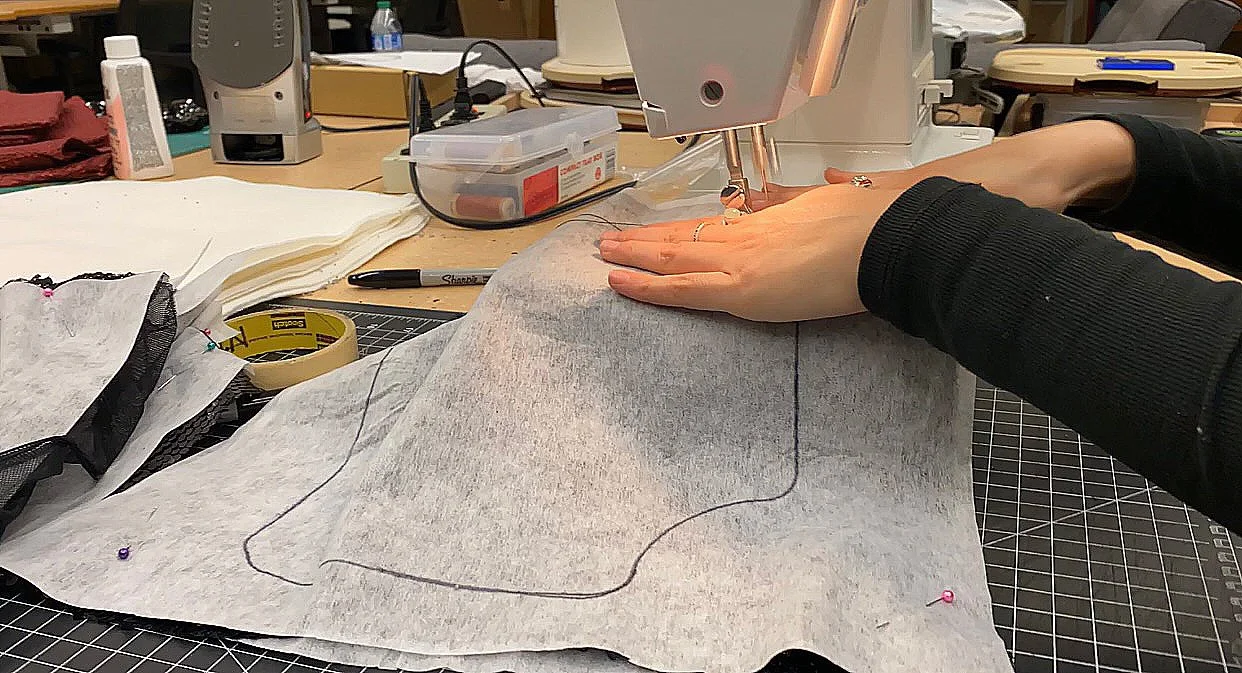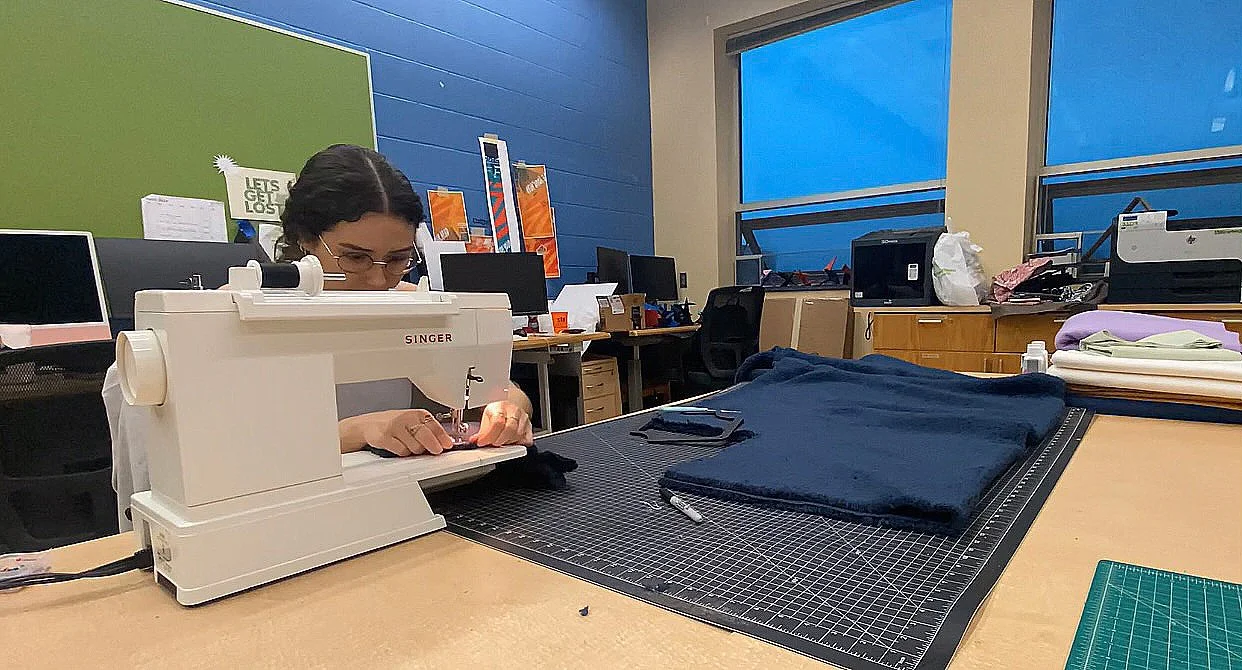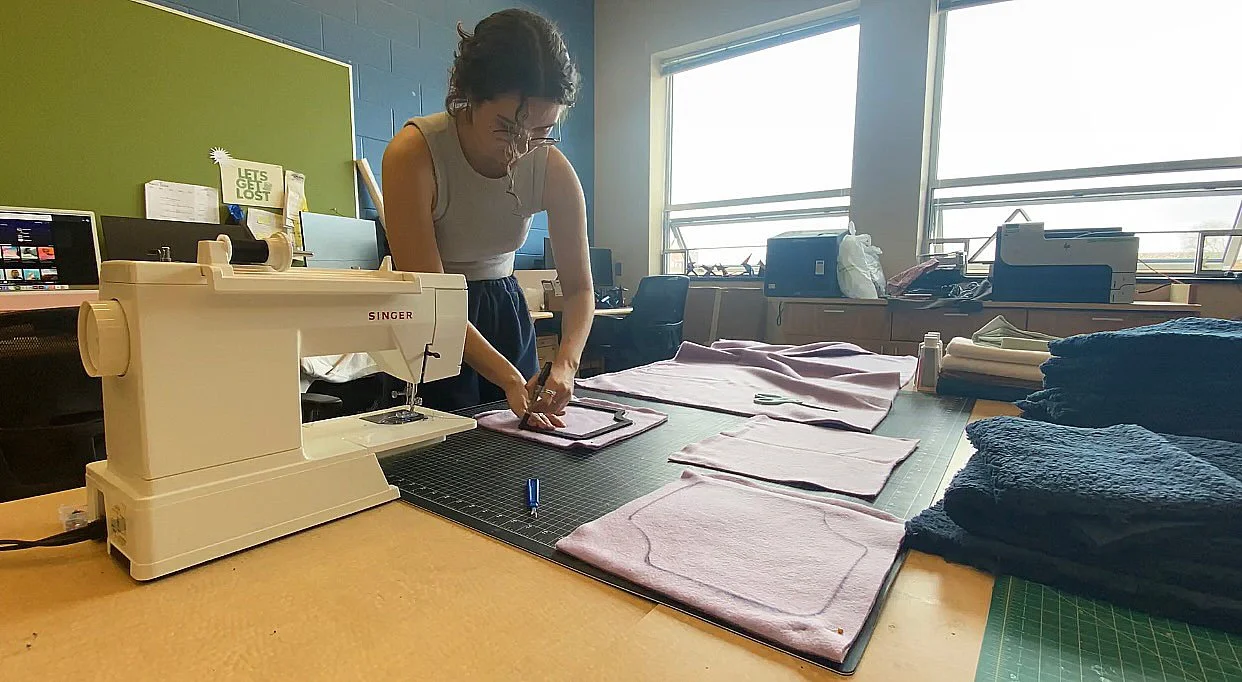
A Touch of Sensitivity
Interactive Installation

A Touch of Sensitivity
Data vISUALIZATION & Interactive Installation, 2024
This 9' x 7.5' tactile installation offered the public an interactive experience to explore their texture sensitivity spectrum. Visitors engaged with different textures, contributed to visualizations, and shared their experiences, fostering curiosity and understanding. This multi-sensory approach encouraged dialogue and raised awareness about sensory sensitivities. The installation incorporated data visualizations derived from thesis research participants, who also contributed to the selection of 12 different tactile materials integrated into the installation.
Selected for their frequent mention in interviews, the 12 tactile materials evoked both consistent and varied sensitivity responses from participants.
Digital data visualization representation of the installation
I conducted 10 interviews with participants aged 16 to 30, representing diverse genders (female, male, and nonbinary) and a variety of professional diagnoses, including Autism Spectrum Disorder, Anxiety Disorders, ADHD, Bipolar Disorder, Depression, Dyslexia, OCD, and Sensory Processing Disorder. Some participants also self-identified with sensory sensitivity issues, sharing both mental and physical responses to stimuli.
The tactile interactive installation visualizes the texture sensitivity spectrum of 60% of these participants. Initially, the bottom row is arranged according to their collective preferences, reflecting the general order of their sensory experiences. Visitors are invited to engage directly with this tactile spectrum by adjusting the arrangement of materials to match their own sensory preferences. By unclipping and rearranging the textures, visitors actively contribute to the evolving data visualization, offering fresh insights into the tactile experience.
The creation of the installation required detailed preparation. Once all 96 shapes were sewn—84 for the installation and 12 backups (one per fabric)—frames were inserted into the fabric shapes. The EVA foam frames easily folded into the fabric openings, while the foam-core and corrugated plastic frames required larger openings due to their rigidity. The top four rows of the installation, comprising 48 shapes, were double-lined with a mix of foam-core and corrugated plastic frames, while the bottom three rows, with 36 shapes, used double-lined EVA foam. This arrangement included 96 foam-core and corrugated plastic frames and 72 EVA foam frames. Each frame was designed with holes for metal rings, which connected the shapes vertically, allowing for organic movement while keeping them secured. Before adding these rings, all 96 shapes were hand-sewn to close the fabric openings, a process that took a professional seamstress 7.75 hours.
Following the assembly, I documented each fabric frame and digitally arranged the installation to test different configurations based on the collected data. After experimenting with various orders, I selected a layout that highlighted key patterns while maintaining visual balance and cohesiveness. The bottom row, designed without holes for metal rings, used clips to allow for interactive adjustments. This design choice enabled users to handle each texture freely, exploring their flexibility, weight, and structure, as well as any sounds produced when textures were rubbed together. The EVA foam frames enhanced this experience by molding to users' hands, making the interaction more immersive and allowing for a deeper connection to the materials.
Installation Documentation / Audience Engagement -
Interactive Engagement: Exploring Sensory Sensitivities Through Tactile Interaction
The installation invited visitors to explore their texture sensitivity by interacting with 12 distinct tactile materials. Participants were encouraged to touch, feel, and compare the textures, which included sherpa fleece, chunky yarn, corduroy, blizzard fleece, t-shirt fabric, denim, satin, velvet, microfiber, wool, thick polyester, and sequins. Each material was carefully selected and color-coded based on sensory spectrum results gathered from research participants. This tactile interaction aimed to immerse users in the sensory experience, fostering personal reflection and engagement.
Audience Contributions: Collaborative Feedback
As visitors engaged with the textures, they were prompted to share their sensory experiences through visualizations and written feedback. These contributions were pivotal in fostering a deeper understanding of individual texture sensitivities. The feedback collected not only enriched the visual aspect of the installation but also provided valuable insights for the thesis research.
Multi-Sensory Dialogue: Fostering Conversations on Sensory Experiences
The interactive nature of the installation spurred conversations among visitors about sensory sensitivities, creating a platform for shared experiences and raising awareness. The multi-sensory approach was instrumental in bridging the gap between understanding and empathy, encouraging participants to reflect on their own sensory experiences and those of others.
Survey Collection and Impact: Data-Driven Insights
The sensory survey associated with the installation was completed by over 40 participants. Their responses were integral to the thesis research, providing quantitative and qualitative data that further informed the visual and tactile elements of the installation. The data visualization aspect, rooted in the research, made the complex sensory experiences more accessible and comprehensible to the audience.
Educational Outcomes: Creating an Immersive Learning Environment
The installation successfully merged education and interaction, offering an immersive environment that not only engaged visitors but also advanced research on sensory sensitivities. Through tactile exploration and feedback collection, the project contributed to a greater understanding of how people experience textures differently, creating an empathetic and informative space that bridged design and academic inquiry.
Audience Engagement - Participating in the sensory survey by selecting their preferred textures.
Behind the Scenes -
Timelapse of cutting out the centers of EVA foam frames, which were partially shaped by a CNC router. These frames provide structure inside the installation's fabric shapes.
Timelapse showcasing a segment of the sewing process for each of the 12 materials used in the installation.
